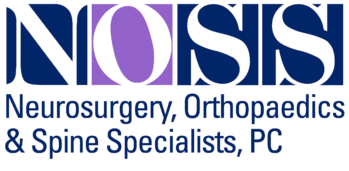Migraine Causes, Treatments, and Differential Diagnoses
Migraines are far more than just ordinary headaches; they are complex neurological events that can be severely debilitating. Millions of people around the world suffer from migraines, making them a significant global health concern. In this blog post, we will delve into the causes, treatment options, and common misconceptions surrounding migraines, including the types of pain often mistaken for them. Additionally, we will explore the importance of differentiating migraines from other neurological and bone-related conditions.

Before we dive into the details, let’s take a look at some demographic statistics related to migraines:
- Prevalence: Migraines are more common than you might think, affecting approximately 1 in 7 people worldwide. This means that over a billion individuals suffer from migraines globally.
- Gender: Migraines are not gender-neutral, as they tend to affect women more frequently than men. About 18% of women and 6% of men experience migraines.
- Age: While migraines can strike at any age, they often first appear during adolescence or early adulthood. However, they can persist throughout one’s life.
- Family History: There is a strong genetic component to migraines. If a close family member suffers from migraines, your risk of developing them increases.
What Causes Migraines?
Migraines are complex and multifactorial, making their exact cause challenging to pinpoint. However, they are primarily believed to be a neurological disorder. Here are some factors that can trigger or contribute to migraines:
- Genetic Predisposition: Family history plays a significant role in migraine susceptibility, suggesting a genetic component.
- Neurological Changes: Migraines involve abnormal brain activity, including changes in the blood flow and nerve signals within the brain.
- Triggers: Migraine triggers can vary from person to person and may include stress, hormonal changes, certain foods, alcohol, and sensory stimuli like bright lights or loud noises.
- Hormonal Fluctuations: Many women experience migraines in relation to hormonal changes, such as during menstruation, pregnancy, or menopause.
- Environmental Factors: Weather changes, altitude, and other environmental factors can also contribute to migraine onset.
Treatment Options
Managing migraines often involves a combination of lifestyle changes, preventive measures, and acute treatment options. Here are some commonly used treatments:
- Lifestyle Modifications:
- Identifying and avoiding trigger factors.
- Maintaining a regular sleep schedule.
- Staying hydrated and eating regular, balanced meals.
- Over-the-Counter (OTC) Medications:
- Non-prescription pain relievers like ibuprofen or naproxen can help alleviate mild migraines.
- Prescription Medications:
- Triptans are commonly prescribed to treat moderate to severe migraines by narrowing blood vessels and blocking pain pathways.
- Preventive medications may be prescribed for individuals with frequent or severe migraines.
- Botox Injections:
- Some people find relief from chronic migraines by receiving Botox injections around the head and neck.
- Alternative Therapies:
- Acupuncture, biofeedback, and relaxation techniques may help some individuals manage migraine symptoms.
Commonly Mistaken Pain for Migraines
Migraines are notorious for mimicking other types of headaches and pain conditions, leading to misdiagnoses. Here are a few conditions that are commonly mistaken for migraines:
- Tension Headaches: Tension headaches are often mistaken for migraines due to their similar symptoms, such as a throbbing or pulsating pain. However, tension headaches typically result from stress and muscular tension and lack the neurological features of migraines.
- Sinus Headaches: Sinus headaches can cause facial pain, pressure, and congestion. While they may resemble migraines, they stem from sinus-related issues rather than neurological factors.
- Cluster Headaches: Cluster headaches can be excruciating and share some symptoms with migraines, such as severe pain on one side of the head. However, they tend to occur in clusters over a period of time and are often associated with other symptoms like eye redness and tearing.
Differentiating Migraines from Neurological and Bone-Related Conditions
It is crucial to differentiate migraines from other neurological and bone-related conditions to ensure appropriate treatment. Here’s how to distinguish between them:
- Neurological Conditions:
- Symptoms: Migraines typically involve severe head pain, often on one side, along with nausea, vomiting, and sensitivity to light and sound. Neurological conditions, on the other hand, may present with symptoms such as numbness, weakness, speech difficulties, or changes in consciousness.
- Timing: Migraines are episodic and can last from hours to days, while neurological conditions may have a more constant or progressive nature.
- Bone and Nerve Conditions:
- Symptoms: Bone and nerve-related headaches may manifest as localized pain that worsens with movement or pressure on the affected area. Migraines, in contrast, involve throbbing, pulsating pain that often affects the entire head.
- Associated Symptoms: Migraines are frequently accompanied by nausea, vomiting, and sensory sensitivities, while bone and nerve conditions may lack these features.
When to Seek Medical Advice
If you suspect your headaches are related to a neurological issue or bone and nerve conditions, it’s essential to seek medical advice promptly. Consult a healthcare professional if you experience:
- New or severe headaches that are different from your usual migraines.
- Neurological symptoms like weakness, numbness, or changes in consciousness.
- Headaches following head trauma or injury.
- Headaches associated with vision changes or other concerning symptoms.
Patient Outcomes
Patient outcomes for migraines vary significantly depending on individual factors, including the frequency and severity of migraines, treatment adherence, and lifestyle modifications. Many people with migraines can achieve significant relief and improved quality of life by working closely with healthcare providers to develop personalized treatment plans.
Migraines are a complex neurological disorder that affects millions of individuals worldwide. While they can be debilitating, understanding the causes, treatment options, and differential diagnoses is essential for effectively managing them. By seeking medical advice when needed and differentiating migraines from other conditions, individuals can work towards better headache management and improved overall well-being.

